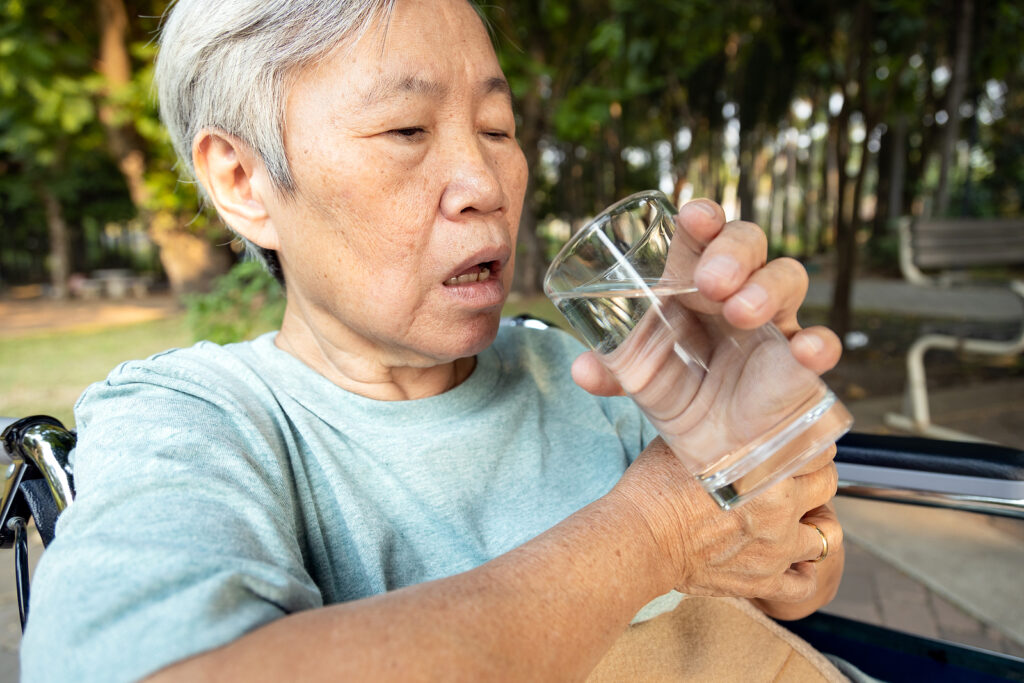By Lucy Piper, medwireNews Reporter
medwireNews: Physical frailty may be a risk factor for Parkinson’s disease, particularly in people with a high genetic risk for the condition, suggest study findings published in JAMA Neurology.
“Integrating frailty assessment into the primary prevention of [Parkinson’s disease] may favor the identification of high-risk individuals”, say the study researchers, led by Liangkai Chen, from Huazhong University of Science and Technology in Wuhan, China.
They assessed 314,998 middle-aged and older adults living in the UK over a mean 12.3-year follow-up, 1916 of whom developed new-onset Parkinson’s disease. The risk for Parkinson’s disease increased 26% among the 135,885 (43.1%) individuals diagnosed with prefrailty who met up to two of the five criteria for the Fried frailty phenotype of weight loss, exhaustion, low physical activity, slow walking speed and low grip strength, and by 87% among those diagnosed with frailty who met three or more phenotype criteria.
“We adopted the frailty phenotype to assess physical frailty instead of the frailty index or frailty scale, which is more clinically practical and the most frequently used epidemiological measure”, the investigators explain.
They add that all the phenotype criteria were significantly associated with incident Parkinson’s disease, except for weight loss, and there was a positive association between the risk for Parkinson’s disease and the accumulation of frailty components, with the risk increasing by 21% with each additional component.
People with prefrailty or frailty were more likely than those without to be older, female, more deprived, current smokers and have higher BMI and more long-term morbidities.
The researchers also report that an increased risk of incident Parkinson’s disease was associated with worse frailty and an increased genetic risk on the polygenic risk score (PRS). Indeed, participants with frailty who were in the highest tertile of PRS had the greatest risk of Parkinson’s disease, at a hazard ratio of 3.22, compared with nonfrail individuals in the lowest tertile of PRS. By contrast, among nonfrail individuals, the risk of Parkinson’s disease decreased by 43%, 42% and 55% among those in the lowest, intermediate and top tertiles of PRS, respectively.
“Our results suggest that improvement of physical frailty would benefit individuals even with a high genetic risk of [Parkinson’s disease]”, they say.
The authors note that the association between prefrailty and frailty was “robust” after taking into account sociodemographic factors, lifestyles, multiple morbidities and genetic background, with an absolute difference in the rate for Parkinson’s disease of 1.6 per 100,000 person–years among people with prefrailty and 5.1 for those with frailty compared with nonfrail individuals.
“Our findings support that frailty might be a valuable tool in [Parkinson’s disease] screening”, the researchers comment.
“In addition, when patients present with prefrailty or frailty strategies to change patients’ lifestyles could be tailored to prevent or delay the development of [Parkinson’s disease].”
News stories are provided by medwireNews, which is an independent medical news service provided by Springer Healthcare Ltd. © 2023 Springer Healthcare Ltd, part of the Springer Nature Group
JAMA Neurol 2023; doi:10.1001/jamaneurol.2023.0183

